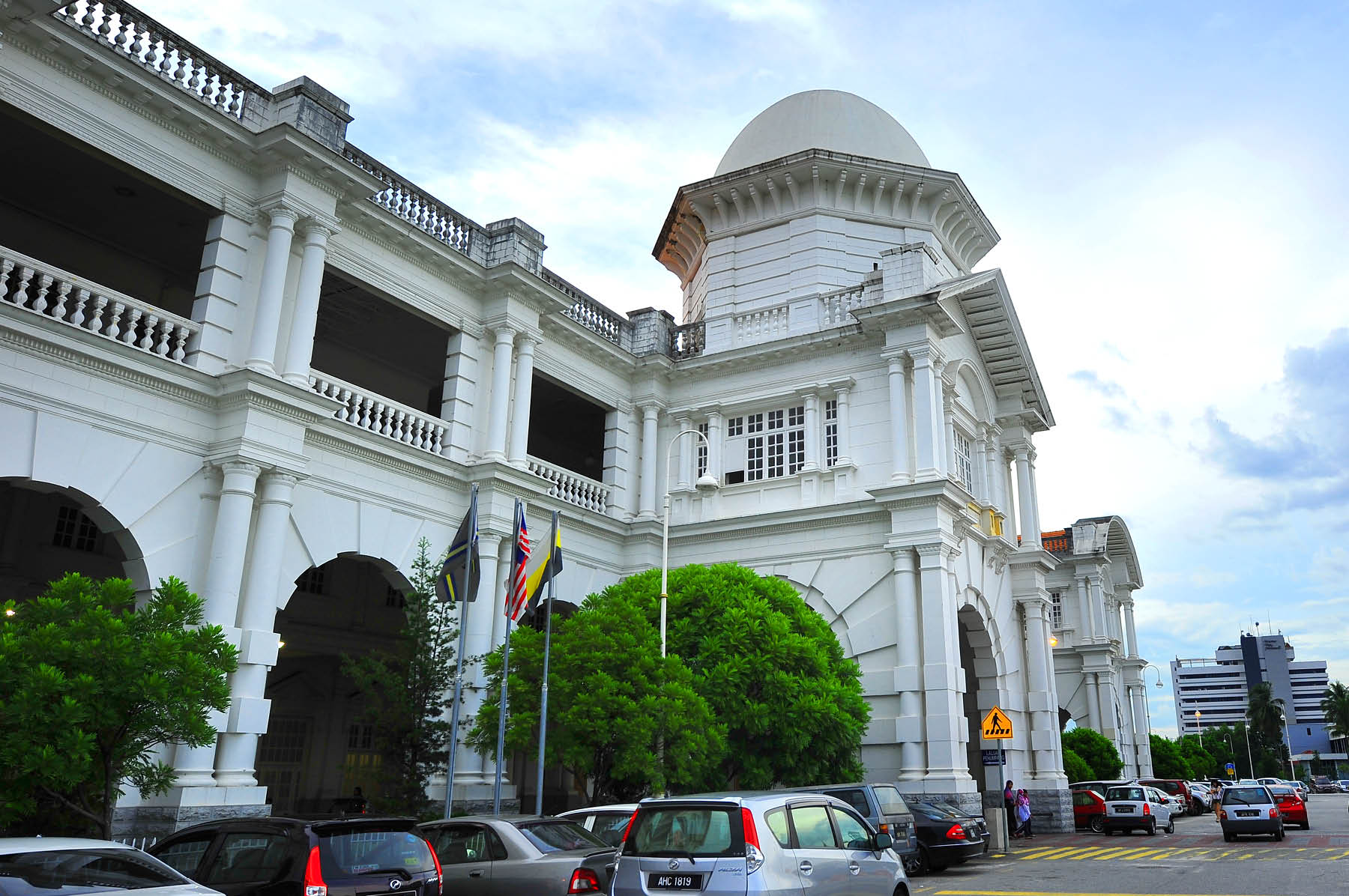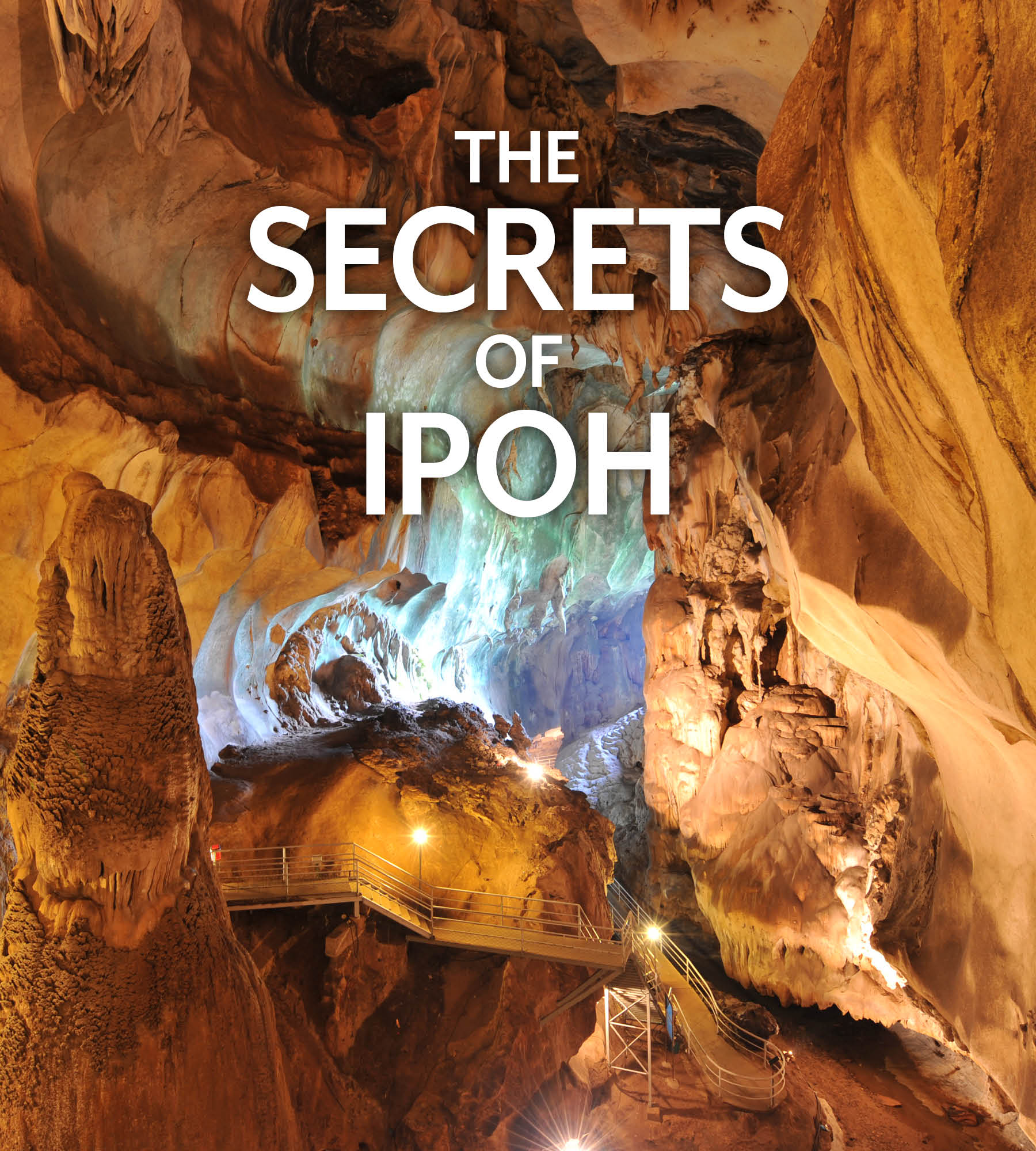Language
You can read the magazine in one of the following languages
I push through the heavy wooden door and gasp as I look up. This is not what I expected. As the door closes behind me, the gushing sound of the adjacent waterfall cuts out and is replaced by the quiet echo of a hypnotic drip, drip, drip, while gentle plumes of warm steam swirl around my body.
Low-set yellow lights gently flicker against rough limestone walls, subtly illuminating a dark but lofty cave, where narrow walkways weave among ancient stalagmites and discreet wooden benches sit before calm pools of water.
Though many luxury resorts have a steam room, not many have a steam room naturally heated by geothermal activity in a cave carved into a mountain. But the Banjaran Hotsprings Retreat in Ipoh does.
The 44-villa resort elegantly wraps around a large, steaming geothermal lake, and each room has its own mineral hot tub. The magnificence comes from the surroundings – not just via the hot springs, but also thanks to the soaring cliffs, blanketed by thick jungle.

The Banjaran, which also has a tremendous meditation space, fine-dining restaurant and whiskey bar tucked away in equally impressive caves, is a mere introduction to Ipoh’s rocky and mineral-rich geology.
Located midway between Penang and Kuala Lumpur, Ipoh got its start as a mining town in the late 19th century. It boomed under British rule, supporting one of the world’s largest tin-mining communities, predominantly made up of workers from southern China who were seeking their fortunes abroad, with many fleeing Opium War-induced poverty.
These days, the tin deposits are long gone and the mines have closed down, but the earth remains open to explore through the many caves that pock the mountains around the city. This includes the largest cave in Peninsular Malaysia, Gua Tempurung, where you can choose from an easy or moderate self-guided walk, or a more challenging guided caving experience through an underground river.
Though the cave can get busy on weekends, mid-morning on a Tuesday we’re completely alone on our self-guided hike, gradually climbing our way up steps to a 120-meter high platform, which feels like a blip compared to the zenith of the mighty cave, which reaches almost 600 meters.
Ipoh’s limestone landscape helped develop local agriculture, with the soil believed to produce some of the best pomelos in the world, according to both the guide and resort manager. This giant green bowling ball-like fruit is a member of the citrus family and they hang heavy on branches by the roadside as our driver takes us to his favorite ‘secret’ destination in Ipoh – the Enlightened Heart Tibetan temple. We bump along a dirt road, cutting through farmland, and park under a pomelo tree, making a quick vehicle exit, for fear that one might lose its will to hold on as we walk beneath it.

Ahead of us, pressed into the hillside, is a magnificent, colorful 13-story Tibetan pagoda – one of the tallest of its kind in the world. A backing track of rhythmic chanting plays as we walk, again alone, up the exposed steps of each floor (punctuated by the odd rooster crow from the neighboring farm). We move slowly to admire hundreds of large and small Buddhist statues, and, reaching the eighth story, crane our necks to view a giant gold Buddha who sits gazing, open-palmed over the lush, green landscape.

Among the tangle of trees below are rubber plantations, and while global demand for rubber has waned, the trees were once a major source of revenue in Ipoh. This was the case for Scotsman William Kellie Smith, who established a successful rubber plantation using Indian labor on the outskirts of Ipoh in the early 1900s, and set about building a mansion with his wealth.
However, on an ill-fated trip to Lisbon, supposedly to purchase a flashy hydraulic lift for his home, he developed pneumonia and died, and the mansion was never finished. Left to ruin (and for visitors to roam), ‘Kellie’s Castle’ now stands as a forsaken symbol of Malaya’s colonial control.
British influence can be seen throughout Ipoh’s old town, where Victorian-style architecture, now dressed with playful street art, lines the streets. In classic white and decorated with Moorish domes, the Ipoh train station is one of the grandest buildings, completed in 1917 to facilitate the transport of tin. The station forms the start of Ipoh’s Heritage Trail, which meanders past buildings of note, marked by plaques written in English.

We pass landmarks including the Ipoh courthouse and Mikasa Photo Shop, from where a Japanese spy worked and used his job as cover to send information about Malaya to the Japanese Army Intelligence before World War II. Then the trail meets Concubine or ‘Second Wife’ Lane, one of the city’s most infamous streets. Now a thriving commercial and nightlife spot, the lane’s unsavory name once matched its patronage, as it drew opium smokers, prostitutes and gamblers, fueled by the city’s mining tycoons.
Though the bygone mining era laid much of Ipoh’s modern history, the city now has a relaxed pace that feels more reminiscent of its pre-mining village days. The center of town is dotted with cute cafes and boutique shops, slotted between traditional restaurants and coffee houses serving Ipoh’s famous ‘white coffee’ (a dark brew sweetened with condensed milk). But the real beauty comes from the ancient mountains, which have seen Ipoh’s boom, bust and revival, and will carefully watch as the city’s story continues to unfold.

